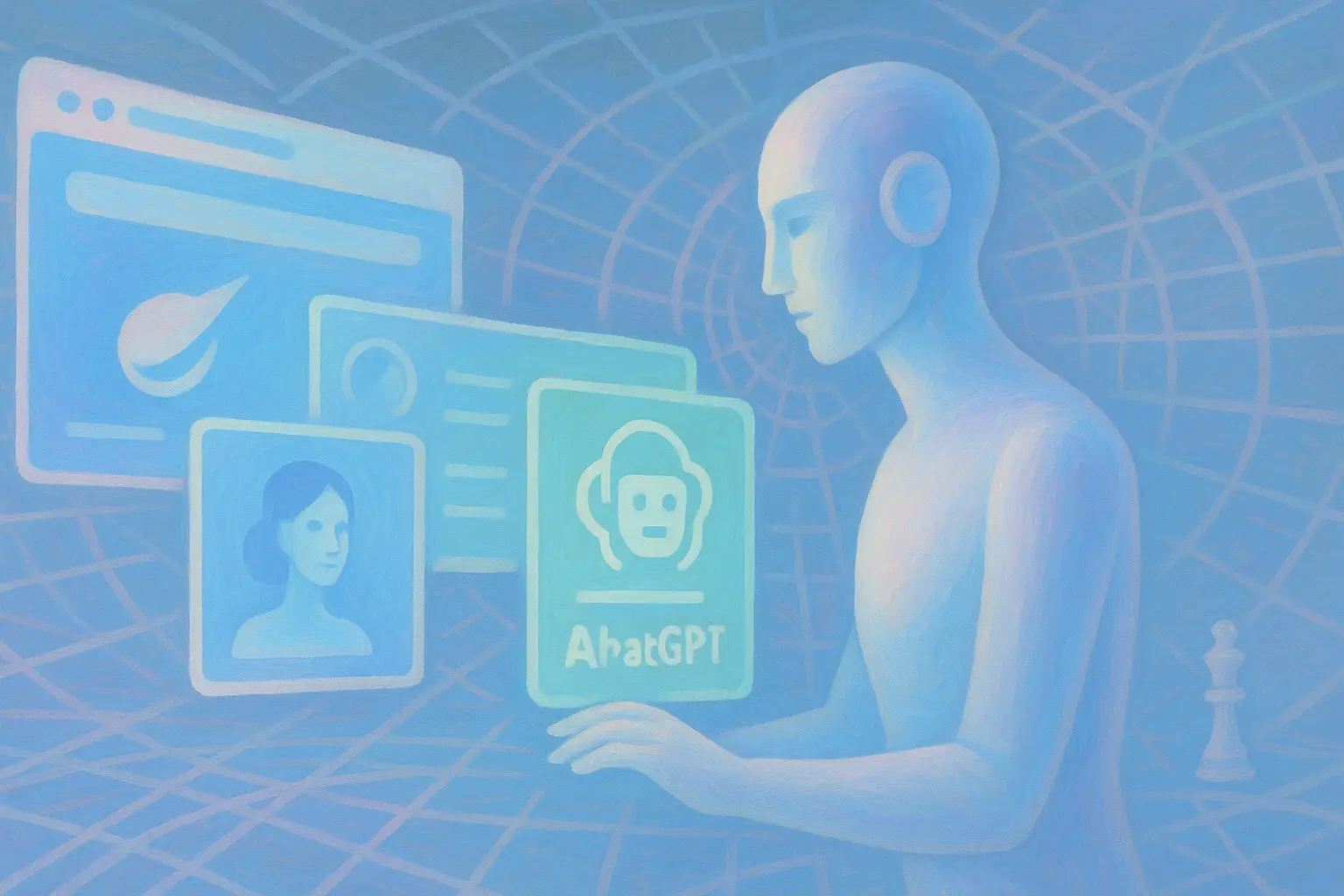
7 Must-Have n8n Community Nodes (2025)
Table of Contents
- Introduction
- Understanding n8n and the Role of Community Nodes
- Node 1: n8n-nodes-tesseractjs
- Node 2: n8n-nodes-run-node-with-credentials-x
- Node 3: n8n-nodes-apify
- Node 4: n8n-nodes-logger
- Node 5: @watzon/n8n-nodes-perplexity
- Node 6: n8n-nodes-firecrawl-scraper
- Node 7: n8n-nodes-supadata
- Building a Complete Workflow with Community Nodes
- Summary Table
- Conclusion
- Frequently Asked Questions (FAQs)
Introduction
There is something refreshing about diving into automation, especially with a tool like n8n that thrives on simplicity and flexibility. If you enjoy streamlining your routine processes and experimenting with new ideas, chances are you’ve come across some community nodes along the way. This article takes an in-depth look at seven very useful n8n community nodes. I’ll guide you through what each node does, share hands-on instructions on how to integrate them into your workflow, and provide plenty of examples to spark your creativity.
By the end of this guide, you will have a good understanding of how community contributions extend n8n's native capabilities. Whether you are new to automation or a seasoned developer testing new integrations, this article offers insights that are both approachable and practical.
Automate with n8n
Build workflows that save time and scale your work. Start free. Grow as you go.
Start Free with n8nUnderstanding n8n and the Role of Community Nodes
n8n is an open-source workflow automation tool that has taken the automation landscape by storm. Unlike traditional automation tools, it is built to be modular and community-friendly. The backbone of its flexibility is the dynamic set of community nodes developed by users worldwide.
What Are Community Nodes?
Community nodes are add-ons created by developers and users. They act as plug-ins that broaden n8n’s repertoire by connecting to services or executing specialized tasks that are not provided in the native installation. These nodes are published as npm packages and can be added to any n8n instance using either the graphical user interface (GUI) or manual installation via the command line.
Why Use Them?
- Extended Functionality: With community nodes, the n8n environment is continually evolving. You get more tools to connect with APIs, webpages, and even incorporate artificial intelligence outputs into your modern workflow.
- Customization: They empower you to build workflows that are tailor-made to your business needs or personal projects.
- Cost-Effective: Many community nodes come free-of-charge and help you bypass considerable development time by offering pre-built integrations.
- Learning and Innovation: Experimenting with these nodes fosters a collaborative spirit in the developer community, encouraging more innovative uses and enhancements.
Think of these nodes as add-ons or plugins in your favorite application that allow you to do more than just the basics. They are the bridging pieces that connect manual tasks to full-blown automation processes.
Node 1: n8n-nodes-tesseractjs
Overview
The n8n-nodes-tesseractjs node is designed to extract text from images using the incredible Tesseract.js Optical Character Recognition (OCR) engine. Imagine scanning receipts, invoices, or even handwritten notes and converting them into machine-readable text. This node transforms what once was a manual input process into an automated workflow.
Key Features
- OCR Capabilities: Accurately extracts text from diverse image formats.
- Coordinate and DPI Options: Allows you to define specific regions for text extraction and set high DPI scores for better accuracy.
- Confidence Scores: Provides metrics on the accuracy of text recognition.
Installation and Setup
You can install this node either directly from the n8n GUI or using npm:
npm install n8n-nodes-tesseractjs
Practical Use-Case
Imagine a small business that receives hundreds of invoices each month. Instead of manually entering data into their accounting system, they can set up an automation workflow:
- Trigger: An HTTP Request or email attachment that uploads the invoice image.
- Action: The n8n-nodes-tesseractjs node processes the image and extracts the text.
- Output: The extracted data is then fed into a database or spreadsheet for further processing.
Example Workflow
Here’s a simplified workflow for the Tesseractjs node:
- Trigger: An HTTP Request captures an incoming image.
- Action: Process the image using Tesseract.js to extract text.
- Output: Store the text along with confidence scores in a database.
For a hands-on guide, you can check out the node’s GitHub repository: n8n-nodes-tesseractjs.
Node 2: n8n-nodes-run-node-with-credentials-x
Overview
Dealing with multiple accounts for a single service, such as email providers or e-commerce platforms, can be time-consuming. The n8n-nodes-run-node-with-credentials-x node acts as a dynamic credentials manager. It enables a node to switch credentials on the fly based on input data.
Key Features
- Dynamic Credential Switching: Adjusts the credentials in real-time using expressions.
- Avoid Duplicate Workflows: No need to set up separate workflows for each account.
- Customizable Parameters: Coordinates credential selection during runtime, ensuring seamless integration.
Installation and Setup
To use this node, follow community guides and install it through your n8n community settings or manual npm installation if available.
Practical Use-Case
Consider a scenario where you handle multiple Shopify stores. Instead of creating separate workflows for each store, use this node to dynamically change the credentials based on the account ID contained in the workflow’s input.
Steps in a Workflow
- Trigger: A webhook receives a store-specific request.
- Action: The node dynamically assigns the relevant credentials.
- Subsequent Node: The workflow continues, now authenticated for the right account, such as sending an email from Gmail with the correct credentials.
For a deeper understanding, visit the community discussion page: n8n-nodes-run-node-with-credentials-x Discussion.
Node 3: n8n-nodes-apify
Overview
This node connects your n8n workflows with Apify, a powerful web scraping tool. When you need to extract data from websites—whether it’s pricing data, reviews, or product information—this node is the perfect companion.
Key Features
- Web Scraping and Data Extraction: Effortlessly scrape data from various websites.
- Task Management: Run Apify actors that manage multiple scraping tasks concurrently.
- Data Retrieval: Pull data sets from Apify to feed directly into your workflows.
Installation and Setup
To install this node, run the following command:
npm install n8n-nodes-apify
Practical Use-Case
For example, an online retailer might use this node to automatically scrape competitor pricing information on a daily schedule. The workflow could operate as:
- Trigger: A scheduled trigger (e.g., every day at midnight).
- Action: Apify runs its web scraping actor to collect pricing details.
- Output: The scraped data can be sent directly to a Google Sheet or stored in a database for analysis.
This node opens up endless possibilities, particularly for market research and competitive analysis. For more details, visit the official GitHub page: n8n-nodes-apify.
Node 4: n8n-nodes-logger
Overview
When building complex workflows, having a mechanism for logging and monitoring is essential. The n8n-nodes-logger node is designed to help developers and operators capture logs, errors, or simply keep track of workflow progress.
Key Features
- Centralized Logging: Send data from various parts of your workflow to a dedicated logging workflow.
- Error Handling: Quickly identify and debug faults in your workflow by capturing logs in real time.
- Flexible Data Capture: Configure the node to log the first item, all items, or aggregate data as needed.
Installation and Setup
Install the logger node using npm:
npm install n8n-nodes-logger
Practical Use-Case
Imagine a scenario in which you have multiple API calls scattered across your workflow. Instead of hunting through bulky logs manually, the Logger node directs all error messages and data into a monitoring workflow. For example:
- Trigger: An HTTP Request triggers your main workflow.
- Action: Upon encountering an error in one of the API calls, the Logger node passes the error details to a dedicated logging workflow.
- Output: The logging workflow then sends a notification via Slack or emails the team with detailed error information.
This setup enhances troubleshooting and minimizes downtime. For more technical details, check out the GitHub repository: n8n-nodes-logger.
Node 5: @watzon/n8n-nodes-perplexity
Overview
Artificial Intelligence is not just a buzzword anymore, and the @watzon/n8n-nodes-perplexity node is proof of that. By integrating Perplexity AI, this node can help generate intelligent responses to user queries or automate tasks that require a nuanced understanding of language.
Key Features
- AI-Powered Responses: Use advanced language models to generate chat-style responses.
- Customizable Parameters: Tailor prompts and output styles based on your needs.
- API Key Integration: Securely connect to Perplexity using API credentials, ensuring data privacy.
Installation and Setup
To get started, install the package with:
npm install @watzon/n8n-nodes-perplexity
Practical Use-Case
Picture a customer support system. Instead of funneling every query to a human agent, your workflow can automatically generate a draft response using this node. Here’s a short breakdown:
- Trigger: A form submission or web chat sends a user’s query to your workflow.
- Action: The Perplexity node processes the query using AI and generates a detailed answer.
- Output: The response is either emailed back to the user or forwarded to a support dashboard for review.
This node is perfect for creating conversational experiences within automated systems. For further insights, visit the npm page for Perplexity node.
Node 6: n8n-nodes-firecrawl-scraper
Overview
Finding reliable ways to scrape websites can be challenging. The n8n-nodes-firecrawl-scraper addresses this by providing robust functionality to scrape and crawl entire websites. Whether you need to extract metadata, crawl sitemaps, or map out structured data, this node offers an organized solution.
Key Features
- Crawling Capabilities: Traverse multiple pages to gather extensive data.
- Single-Page Scraping: Supports quick extraction from a single web page.
- Structured Output: Returns data in an easy-to-digest format that is well-suited for further processing.
Installation and Setup
Install the node via npm:
npm install n8n-nodes-firecrawl-scraper
Practical Use-Case
A blogger or digital marketer might want to monitor competitor websites. With the Firecrawl Scraper node, you can automate the process:
- Trigger: Manual trigger or scheduled run.
- Action: The node scrapes the target website for relevant metadata such as blog post titles, publication dates, and categories.
- Output: The collected data is stored in a central database or sent directly to a reporting tool.
This node is essential for anyone invested in competitive analysis or data aggregation. For more on its functionality, see the npm page for Firecrawl Scraper.
Node 7: n8n-nodes-supadata
Overview
In today’s video-centric online landscape, gathering insights from platforms like YouTube is increasingly important. The n8n-nodes-supadata node specializes in extracting detailed information from YouTube channels, videos, or even entire playlists. It doesn’t just stop at metadata; it can retrieve transcripts and further enrich your datasets.
Key Features
- YouTube Data Extraction: Retrieves video details, channel statistics, and playlist information.
- Transcript Retrieval: Pulls transcripts for content analysis or accessibility purposes.
- Web Content Integration: Extends functionality beyond YouTube by also extracting webpage content.
Installation and Setup
To install, run:
npm install n8n-nodes-supadata
Practical Use-Case
Think about an influencer marketing agency that regularly analyzes content performance. Instead of manually searching through YouTube, they can schedule a workflow that:
- Trigger: A scheduled workflow every week.
- Action: The Supadata node fetches data about a list of channels, including video transcripts.
- Output: The results are then forwarded to a Slack channel or stored in a spreadsheet for performance analysis.
This node significantly boosts productivity and allows for more strategic decision-making. For more details, you can look up the npm page for Supadata.
Building a Complete Workflow with Community Nodes
After exploring each of the seven nodes, you might be wondering how to tie them together into a single, cohesive workflow. Let’s walk through an example scenario that demonstrates a full-cycle automation process using multiple community nodes.
Scenario: Automated Data Processing & Notification
Imagine you manage a business that receives digital invoices, monitors competitor websites, and also maintains a customer support channel. Here’s how you might integrate these nodes:
-
Trigger – Incoming Invoice:
- Set up an HTTP Request node as the initial trigger. An invoice image (PNG or JPEG) is received.
-
OCR Processing:
- Use the n8n-nodes-tesseractjs node to extract the text data from the invoice.
- Configure options to target specific areas in the image for text extraction and note the confidence scores.
-
Credential Management for Email Notifications:
- As soon as the data has been extracted, use the n8n-nodes-run-node-with-credentials-x node to assign the correct credentials dynamically. This ensures the following task—sending email notifications—uses the right email account for each client, especially if sending from multiple Gmail accounts.
-
Data Enrichment via Web Scraping:
- Utilize the n8n-nodes-apify node to crawl your competitors’ websites. Collect market data related to pricing and product details that could correlate with the invoice details.
- Set a daily or hourly schedule to run this sub-workflow.
-
Log Important Events:
- Throughout the workflow, embed the n8n-nodes-logger node. This captures key data points along with errors. For example, if the OCR does not extract text successfully or if the competitor data is incomplete, the Logger node will push a notification (via Slack or email) with error details.
-
AI-Powered Customer Support:
- On the customer support side, whenever an inquiry is received (triggered by a webhook), route the conversation through the @watzon/n8n-nodes-perplexity node. This node can generate a draft response, which a support agent can later review and send, balancing automation with personal touch.
-
Content Aggregation and Analysis:
- Finally, deploy the n8n-nodes-firecrawl-scraper and n8n-nodes-supadata nodes together:
- Use the Firecrawl Scraper to gather metadata from potential competitor marketing blogs.
- Use the Supadata node to retrieve YouTube data, such as video transcripts or channel statistics, that are relevant to your marketing analysis.
- Aggregate the data and store it in a central database for business intelligence purposes.
- Finally, deploy the n8n-nodes-firecrawl-scraper and n8n-nodes-supadata nodes together:
Workflow Diagram (Conceptual)
Below is a simple conceptual diagram representing the integration:
| Step | Node/Action | Description |
|---|---|---|
| 1. Trigger | HTTP Request | Invoice image or customer query received. |
| 2. OCR | n8n-nodes-tesseractjs | Extract text data from received image. |
| 3. Credential Management | n8n-nodes-run-node-with-credentials-x | Dynamically set appropriate credentials. |
| 4. Data Enrichment | n8n-nodes-apify | Scrape competitor details. |
| 5. Logging Event | n8n-nodes-logger | Log workflow events and error details. |
| 6. AI Response Generation | @watzon/n8n-nodes-perplexity | Generate automatic responses for support queries. |
| 7. Content Aggregation | n8n-nodes-firecrawl-scraper & Supadata | Scrape blogs and YouTube data for analysis. |
This example demonstrates how different community nodes collectively enhance your overall workflow, bringing automation to data extraction, account management, error logging, AI responses, and data aggregation.
Summary Table
For quick reference, here’s a table summarizing the seven nodes and their primary functions:
| Node Name | Functionality | Use Case Example |
|---|---|---|
| n8n-nodes-tesseractjs | OCR-based text extraction from images | Automating invoice data entry |
| n8n-nodes-run-node-with-credentials-x | Dynamic runtime credential management | Multi-account email notifications |
| n8n-nodes-apify | Web scraping and data retrieval | Scraping competitor pricing data |
| n8n-nodes-logger | Centralized logging and monitoring | Debugging and error alerts in a workflow |
| @watzon/n8n-nodes-perplexity | AI-powered response generation | Drafting customer support replies |
| n8n-nodes-firecrawl-scraper | Website crawling and scraping | Extracting blog metadata for market analysis |
| n8n-nodes-supadata | YouTube and web data extraction | Retrieving video transcripts for analysis |
Conclusion
The flexibility of n8n truly shines through its extensive library of community nodes. As we explored, these seven nodes offer a wide range of functionalities—from reading text off images to dynamically managing credentials, from diving into web scraping to harnessing AI for generating intelligent responses. Each node provides a robust feature set that can be tailored to meet the demands of diverse business scenarios.
What I find particularly exciting is the possibility to chain these nodes together. Combined, they form a seamless automation pipeline that minimizes manual intervention and maximizes accuracy. The journey of integrating these tools into a workflow may require a bit of experimentation, but the payoff is a more efficient system that can scale with your needs.
If you’re new to n8n or perhaps have been relying solely on built-in nodes, embracing these community-developed tools could be transformative. Not only do they save time, but they also open up new avenues for innovation. I encourage you to explore the provided links, try out the installation steps, and tweak the example workflows to suit your specific requirements. Each node represents a piece of the puzzle, coming together to build an automation landscape that is as unique as your use case.
Remember, technology is constantly evolving. The community behind n8n grows every day, contributing fixes, enhancements, and entirely new nodes. The true power lies within the collaborative spirit of developers sharing their solutions with others. So next time you run into a bottleneck or a repetitive task, check out the community nodes—they might just have the perfect tool to address your problem.
With these insights and practical examples, I hope you feel empowered to explore and integrate these seven very useful n8n community nodes into your daily workflows. Enjoy the adventure of automation as you uncover new efficiencies and creative possibilities that these versatile tools can offer!
Frequently Asked Questions
Share this article
Related Articles

ChatGPT Go Free in India: Unlock AI Power 2025!
Explore how OpenAI's ChatGPT Go free offer in India is set to transform AI accessibility, from enhanced features to market impact and strategic benefits.

Atlas vs Comet: AI Browser Battle 2025
Dive deep into the world of AI-native browsers with ChatGPT Atlas and Perplexity Comet. Explore their unique features, philosophies, and the battle that is reshaping how we interact with the web.

ChatGPT Atlas: AI Browser Revolution
Explore how ChatGPT Atlas, OpenAI's groundbreaking AI-powered browser, transforms web browsing with contextual intelligence, personalized automation, and robust privacy controls.
